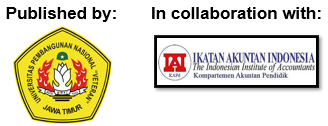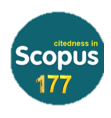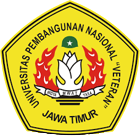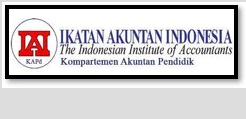An Evaluation of Risk Management's Impact on University X's Performance
DOI:
https://doi.org/10.33005/jasf.v7i2.513Keywords:
Risk Management, University, Quality Education ServicesAbstract
Risk management has become an important element in efforts to improve university quality, especially in the era of globalization filled with challenges and uncertainties. This study aims to analyze the implementation of risk management at University X as a means to enhance the university's quality. This research focuses on the implementation of risk management at the Lembaga Penelitian dan Pengabdian Masyarakat (LPPM), which implements the tri dharma of university in the form of research development and community service, and conducts an analysis using ISO 31000:2018. This research employs a qualitative descriptive method and a case study approach, collecting primary and secondary data through interviews, SOP documentation, and risk management guideline documentation. The research results show that the LPPM of University X has implemented the risk management process using ISO 9001:2015. The implementation of risk management by LPPM can be considered adequate; however, there are challenges such as the establishment of risk criteria, comprehensive risk identification, and the lack of integration of risk management into the strategic decision-making process. This research suggests the implementation of risk management at the university level to ensure the integration of risk management and the enhancement of risk management understanding within the university environment. This finding will help university education service, not limited to University X, to enhance their quality based on risk management.
Downloads
References
Bamber, C. (2022). The Role of Enterprise-wide Risk Assessment in Developing Resilient Higher Education Institutions. 43, 13–33. https://doi.org/10.1108/s2055-364120220000043002
Chountalas, P. T., Magoutas, A. I., & Zografaki, E. (2020). The heterogeneous implementation of ISO 9001 in service-oriented organizations. TQM Journal, 32(1), 56–77. https://doi.org/10.1108/TQM-02-2019-0053
Haira, D., Sari, R. N., & Indrawati, N. (2022). The Importance of Social Entrepreneurship Orientation and Social Salience on Hospital Performance: The Mediating Role of Business Planning. Journal of Accounting and Strategic Finance, 5(1), 40–65. https://doi.org/10.33005/jasf.v5i1.233
Hidayah, R., Sukirman, S., Suryandari, D., & Rahayu, R. (2018). Peran Auditor Internal dalam Implementasi Manajemen Risiko pada Perguruan Tinggi. Journal of Applied Accounting and Taxation, 3(2), 129–133. https://doi.org/10.30871/jaat.v3i2.847
Hidayati, N., Pragita, T. E., & Sari, W. S. S. (2018). SNI ISO 21000:2018. In Panduan Penerapan SNI ISO 21000:2018 Sistem Manajemen Organisasi Pendidikan (Vol. 11, Issue 1). Badan Standardisasi Nasional.
Jesry, M., Alhaj Omar, F., Rashwani, A., Bark, I., Jammo, K., Ajam, S., & Kassab, Z. (2022). Exploring the value of a risk-management quality-assurance model to support delivery of quality higher education in the conflict-affected northwest of Syria. International Journal of Educational Research Open, 3(December 2021), 100134. https://doi.org/10.1016/j.ijedro.2022.100134
Khaw, T. Y., & Teoh, A. P. (2023). Risk management in higher education research: a systematic literature review. Quality Assurance in Education, 31(2), 296–312. https://doi.org/10.1108/QAE-04-2022-0097
Khorshid, S., & Mehdiabadi, A. (2020). Effect of organizational identification on organizational innovativeness in universities and higher education institutions of Iran, mediated by risk-taking capability. European Journal of Innovation Management, 24(4), 1430–1458. https://doi.org/10.1108/EJIM-04-2019-0094
Kucińska-Landwójtowicz, A., Czabak-Górska, I. D., Lorenc, M., Domingues, P., & Sampaio, P. (2023). Performance measurement model for technical universities – case study. International Journal of Quality and Reliability Management, 40(10), 2632–2663. https://doi.org/10.1108/IJQRM-04-2021-0107
Lam, J. (2017). Implementing Enterprise Risk Management. In Implementing Enterprise Risk Management. https://doi.org/10.1002/9781118922415
Marx, J., & de Swardt, C. J. (2023). An interactive qualitative analysis of academics’ views of a competency-based undergraduate qualification in risk management. Qualitative Research in Financial Markets, 15(3), 471–494. https://doi.org/10.1108/QRFM-03-2022-0039
Maulidar, A., & Majid, M. S. A. (2020). Do Good Corporate Governance and Financing Risk Management Matter for Islamic Banks’ Performance in Indonesia? Etikonomi, 19(2), 169–184. https://doi.org/10.15408/etk.v19i2.15080
Rampini, G. H. S., Berssaneti, F. T., & Saut, A. M. (2019). Insertion of risk management in quality management systems with the advent of ISO 9001:2015: Descriptive and content analyzes. In Springer Proceedings in Mathematics and Statistics (Vol. 281, Issue April). Springer International Publishing. https://doi.org/10.1007/978-3-030-14973-4_20
Reyne, T. V. (2016). Implementasi Peran Konsultasi Audit Internal Universitas X. Universitas Indonesia.
Ritonga, A. Y. (2023). Peran Audit Internal Dalam Penerapan Manajemen Risiko Perusahaan. Owner, 7(3), 2348–2357. https://doi.org/10.33395/owner.v7i3.1454
Savolainen, T. (2023). A safe learning environment from the perspective of Laurea University of applied sciences safety, security and risk management students and staff. Heliyon, 9(3), e12836. https://doi.org/10.1016/j.heliyon.2023.e12836
Schindler, P. (2021). Business Research Methods (14th Edition). McGraw-Hill Higher Education (International). https://bookshelf.vitalsource.com/books/9781264364541
Sekaran, U., & Bougie, R. (2016). Research Methods for Business (7th ed.). Wiley.
Simanjuntak, R., Priyarsono, D. S., & Sumarti, T. (2021). Analisis Tingkat Maturitas Implementasi Manajemen Risiko di IPB University. Jurnal Manajemen Dan Organisasi, 12(3), 177–188. https://doi.org/10.29244/jmo.v12i3.32779
Syukron, B., Sari, F., Ramadhani, S. A., UmpuSinga, H. A., Bhaidowi, M. M., & Rofik, M. A. (2022). ISO 21001:2018: Upaya Mewujudkan Budaya Mutu pada IAIN Metro. Jurnal Ilmiah Pendidikan Dasar, 8(2), 79–98. https://e-journal.metrouniv.ac.id/index.php/elementary%0AISO














